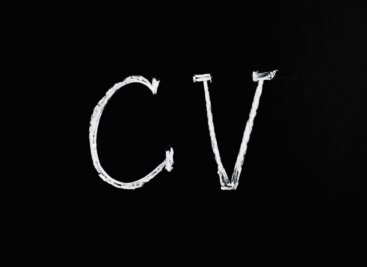How do you balance skills-based hiring and CV evaluation to ensure effective management consultancy recruitment?
Recruitment is one of the most significant responsibilities for board-level decision-makers. The process determines not only the quality of new hires but also the strategic trajectory of the organisation. Recently, a lively debate has emerged around the efficacy of traditional CV-based recruitment versus skills-based hiring. The former relies on a candidate’s past roles and experiences, while the latter prioritises demonstrated competencies relevant to the role at hand.
Both approaches have distinct advantages and limitations: it’s NOT either/or!
Surely a balanced methodology that integrates their strengths should yield the most effective recruitment outcomes?
This article explores how to create a recruitment process that merges the insights provided by CVs with the practical focus of skills-based hiring.
The Role of CVs in Recruitment
The traditional CV remains a cornerstone of the recruitment process, particularly for roles requiring senior and experienced hires such as management consulting. CVs provide an overview of a candidate’s professional journey, highlighting past roles, responsibilities, achievements, and educational credentials.
For these positions, the CV is an invaluable tool to assess an individual’s career trajectory, progression, and exposure to challenges.
Advantages of CVs
1. Historical Context
A CV provides a narrative of a candidate’s professional growth. This historical insight can indicate readiness for both client facing and leadership challenges based on patterns of success and increasing responsibility.
2. Credibility Through Proven Experience
Past achievements may justifiably serve as a proxy for future potential. A history of delivering measurable outcomes in similar roles can reassure decision-makers about a candidate’s ability to replicate that success.
3. Cultural Fit and Strategic Insight
CVs can signal alignment with the organisational culture or industry. For instance, candidates who have worked in sectors with similar operational complexities may bring relevant insights.
Limitations of CVs
However, relying solely on CVs can lead to blind spots:
- Overemphasis on Tenure. Candidates with lengthy experience but limited demonstrable impact, which may be difficult to assess, can be favoured over those with shorter, more impactful careers.
- Bias Risks. Information on CVs, such as education or previous employers, can unintentionally influence decisions, “for or against”, based on subjective preferences rather than role-specific requirements.
- Static Data. A CV is a snapshot, often lacking real-time validation of skills or capabilities.
The Promise of Skills-Based Hiring
Skills-based hiring shifts the focus from experience to the current and actual competencies required for a role. This approach evaluates candidates through practical assessments and situational challenges, aligning closely with the job’s demands.
Advantages of Skills-Based Hiring
1. Focus on Capability
Skills-based methods evaluate candidates on their ability to perform specific tasks, offering a direct measure of job readiness.
2. Inclusive Recruitment
By prioritising skills over traditional credentials, this approach can broaden the talent pool, attracting candidates from different educational and professional backgrounds.
3. Adaptability to Changing Needs
In dynamic industries, job requirements often evolve rapidly. Skills-based hiring ensures the emphasis remains on competencies that meet current challenges, rather than possibly outdated qualifications and experience from many years ago.
Challenges of Skills-Based Hiring
Despite its merits, skills-based hiring is not without its limitations:
- Loss of Context. Ignoring past experience may omit valuable insights into how a candidate has navigated challenges, worked with teams, or led initiatives.
- Difficulties in Assessment Design. Creating effective, role-specific skills tests can be resource-intensive and may not always predict long-term performance.
- Potential for Narrow Evaluation. A hyper-focus on specific skills risks overlooking broader competencies like strategic thinking, leadership, or cultural alignment.
Integrating CV Insights with Skills-Based Approaches
The most effective recruitment process blends the strengths of CV-based evaluations with skills-based hiring.
Here’s how to structure a process that benefits from both methodologies:
1. Define Core Role Requirements
Begin by clearly identifying the key competencies, experiences, and personal attributes required for the role. This includes both technical skills and softer qualities, such as leadership, adaptability, and cultural fit. By doing so, you establish a framework that balances skill evaluation with contextual understanding.
2. Use CVs as a Screening Tool
Leverage CVs during the initial stages of recruitment to:
- Identify Relevant Experience. Assess candidates with histories of tackling challenges e.g. a client’s business problems, similar to those they would face in the role.
- Spot Leadership Indicators. Look for evidence of initiative, innovation, and progression in previous roles.
- Shortlist Candidates for Further Evaluation. Use CV insights to create a pool of candidates whose experiences align with the role’s broad objectives.
3. Introduce Structured Interviews
Combine insights from CVs and assessments during structured interviews. Use standardised questions to:
- Probe deeper into the experiences highlighted in the CV.
- Discuss the rationale and approach taken during skills-based assessments.
- Evaluate alignment with the organisation’s long-term vision and culture.
4. Design Skills-Based Assessments
Incorporate practical assessments into later recruitment stages. Examples include:
- Case Studies and Simulations. Ask candidates to solve real-world problems relevant to the role, offering insight into their decision-making and problem-solving abilities.
- Role-Specific Tasks. Evaluate proficiency in specific tools, frameworks, or methodologies essential to the position.
- Soft Skills Evaluations. Use behavioural interviews or situational judgement tests to assess leadership, teamwork, and adaptability.
5. Consider Leveraging Technology for Unbiased Evaluation
AI-driven tools can help minimise unconscious bias by anonymising CVs during initial screening or scoring skills assessments objectively. However, decision-makers should ensure these technologies are transparent and free from algorithmic biases.
6. Prioritise Continuous Improvement
Regularly review the recruitment process to ensure it balances fairness, efficiency, and effectiveness. Gather feedback from hiring managers and candidates to identify areas for refinement.
Benefits of a Hybrid Approach
Adopting a recruitment process that integrates CV evaluation with skills-based hiring offers several advantages:
- Comprehensive Candidate Assessment. By considering both historical experience and demonstrated skills, decision-makers gain a holistic view of each candidate.
- Reduced Hiring Risks. Skills-based assessments validate a candidate’s abilities, while CVs provide reassurance about their readiness for leadership and alignment with organisational goals.
- Enhanced Diversity. Combining these methods widens the talent pool without compromising on quality.
Conclusion
The debate between CV-based recruitment and skills-based hiring need not be a binary choice. For experienced and more senior roles, especially in fields like management consulting, an integrated approach ensures that organisations benefit from the historical insights offered by CVs and the practical rigour of skills assessments.
Senior hiring and HR leaders should prioritise creating a recruitment framework that reflects the complexities of the role and the organisation’s strategic vision. By striking a balance between the old and the new, they can build teams that are not only highly skilled but also well-suited to drive long-term success.
For more information on the job market, or to discuss your hiring plans please contact Chris Sale, Managing Director, Prism Executive Recruitment via [email protected]




